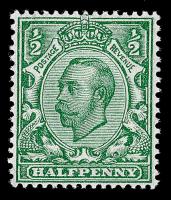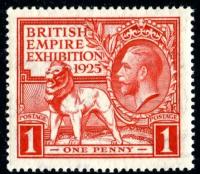King George V
King George 5th Stamps
Step into a world of royal elegance and historical significance with our King George V Stamps Collection. King George V, the second son of King Edward VII, reigned from 1910 to 1936, leading the British Empire through the tumultuous years of World War I and the post-war era.
Our collection brings together the comprehensive range of King George V stamps. From the classic "Seahorses" to the iconic "Downey Head" varieties, these stamps are a tapestry of history. Whether you're an experienced collector or just beginning your philatelic journey, these stamps offer a window into the past.
Issues of George 5th
Downey Heads - named Downey Heads after the Royal Photographers W & D Downey. They were contentious upon their issue due to their quality. The Postmaster General rushed for the stamps to be ready for Coronation Day, meaning Harrison & Sons and the Royal Mint did not produce their best work. The halfpenny (green dolphins) and 1d (red lions) were available for sale, but the other designs and values were abandoned.
Royal/Block Cypher Mackennal Heads - the King insisted on abandoning the Downey design in favour of the Mackennal profile - an effigy for coins and medals. These replaced the Downeys in 1912, introducing a full range of values printed again by Harrison & Sons (save for the 6d printed by Somerset House).
Dark Frame Photogravures - in 1933 a mandate was made for use of the Photogravure method. A number of designs were proposed, including a photographic head, but the King preferred the existing Mackennal head. Thus, the existing Letterpress designs were adapted for Photogravure by Harrison & Sons. Further high value designs were proposed, but due to the King's death were never issued.
Seahorses - when designing the low values, Mackennal proposed a separate design to the King for high values, depicting Britannia riding a chariot through the sea. The King was directly involved in the printing process, insisting on a recess printing method. Waterlow, Harrison and the Royal Mint collaborated to get the design to print.
Commemoratives - the first British Commemorative stamp was designed as part of a competition. The 1924 British Empire Exhibition set features the profile of the King alongside a roaring lion.
Return to: All Categories








